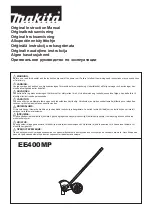
Thermo Scientific
180 liter LN2 Supply Tank v
Preface
MVE has conducted a rigid test program for liquid cylinders, both
internally and through an independent testing laboratory, to verify the
safety of MVE equipment. MVE cylinders are safely designed with the
following features:
(1 An exclusive all stainless steel support system designed to withstand
many years of rugged service.
(2) A stainless steel neck tube that is designed not to break in case of a
minor accident, such as a liquid cylinder being inadvertently tipped
over.
(3) A vacuum maintenance system specifically designed to provide long life
and safety provisions.
(4) Safety relief devices to protect the pressure vessel and vacuum casing,
sized and selected in accordance with CGA Pamphlet S-1.1 “Safety
Relief Devices for Cylinders.” The safety of the inner pressure vessel is
controlled by a pressure relief valve and rupture disc. A reverse
buckling rupture disc protects the vacuum casing from overpressure.
While MVE equipment is designed and built to rigid standards, no piece
of mechanical equipment can ever be made 100% safe. Strict compliance
with proper safety and handling practices are necessary when using a liquid
cylinder or other compressed gas equipment. We recommend that all our
customers reemphasize safety and safe handling practices to all their
employees and customers. While safety features have been designed into
the unit and safe operations are anticipated, it is essential that the user of
these liquid cylinders carefully read to fully understand all WARNINGS,
CAUTIONS and Notes listed in this safety section and enumerated below.
Also read to fully understand the information provided in the Safety
Bulletins for Oxygen and Inert Gases located in Section 19 of this Manual.
Periodic review of the Safety Summary is recommended.
Warning
Excess accumulation of oxygen creates an oxygen enriched
atmosphere (defined by the Compressed Gas Association as an oxygen
concentration above 23 percent). In an oxygen enriched atmosphere,
flammable items burn vigorously and could explode. Certain items
considered non-combustible in air may burn rapidly in such an
environment. Keep all organic materials and other flammable substances
away from possible contact with oxygen; particularly oil, grease, kerosene,
cloth, wood, paint, tar, coal dust, and dirt which may contain oil or grease.
DO NOT permit smoking or open flames in any area where oxygen is
stored, handled, or used. Failure to comply with this warning may result in
serious personal injury.
Safety






































